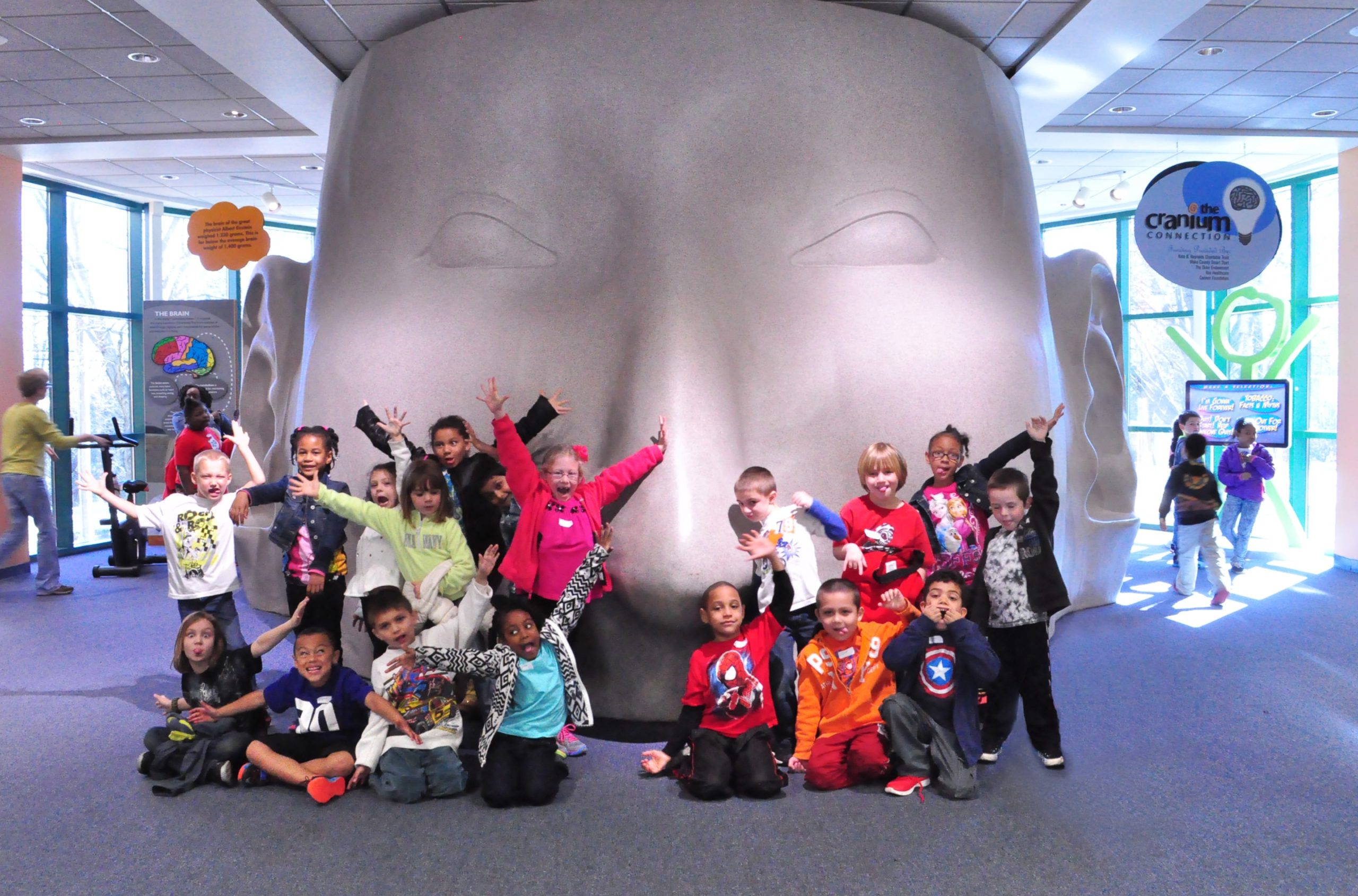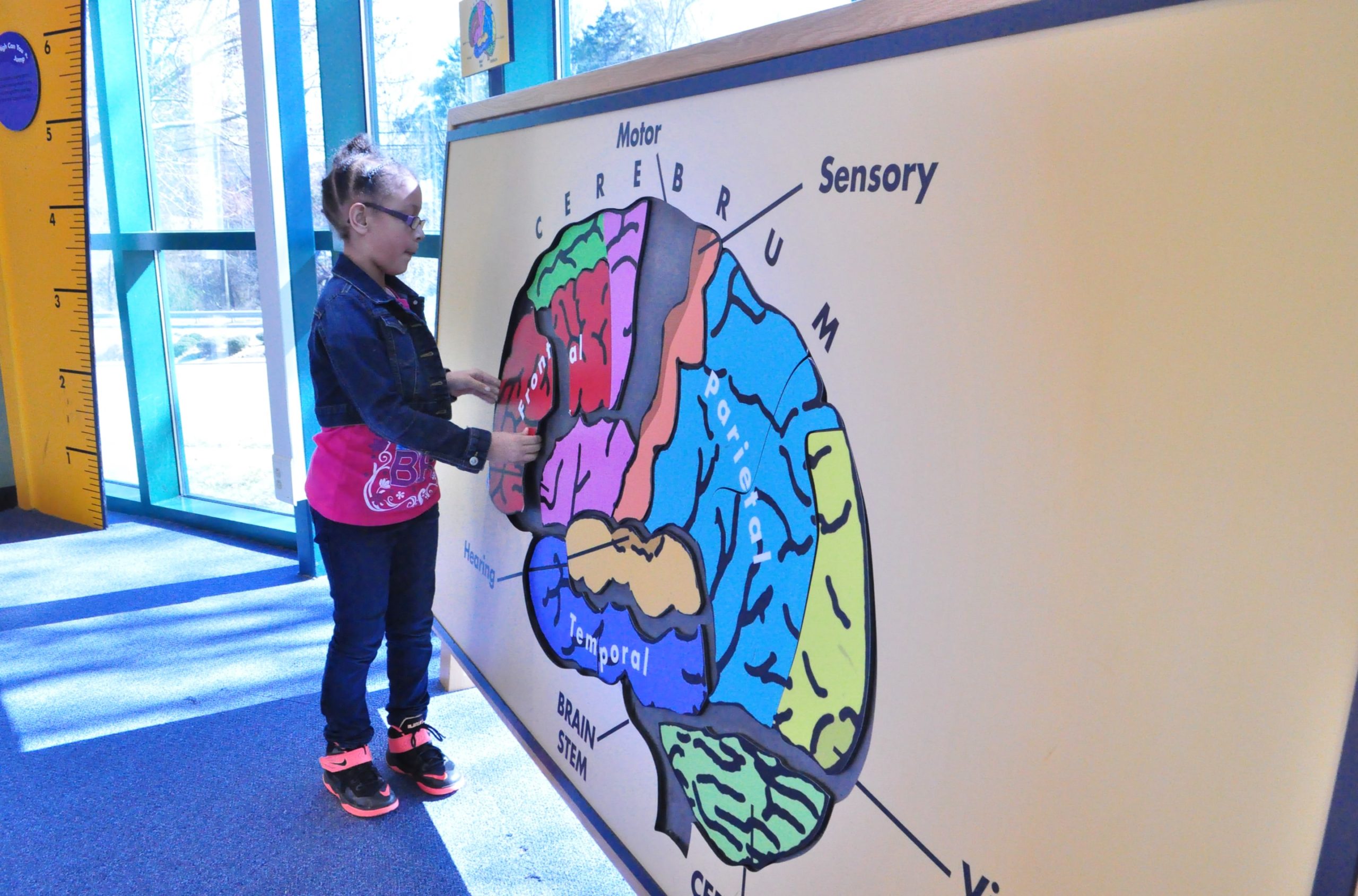Cranium Connection
Have you ever seen a twelve-foot-tall human head? Anyone who visits the Poe Center can say they have. All visitors to the Poe Center are immediately greeted by one of Poe’s most iconic exhibits, the Cranium Connection.
Located in the lobby, the “Brain Theater” features a 20-by-20 foot cave-like space with decorative lighting to simulate veins and nerves. Visitors enter the Cranium Connection behind the ear to view a brain health education program through two large monitors at the front of the theater, which are located where the eyes would be. Nerf balls are gently launched at the audience during the program to demonstrate the reactions of the nervous system to stimuli.
The approximately 10-minute Cranium Connection program is most appropriate for ages 6-12 and is included in the field trip experience.
Your Brain!
The brain is the command center of your body. It controls just about everything you do, even when you are sleeping. Weighing about 3 pounds, the brain is made up of many parts that all work together as a team. Each of these different parts has a specific and important job to do.
Parts of the brain include:
- The brain stem is in charge of all of the functions our body needs to stay alive—breathing, circulating blood, and digesting food. It also links the brain with the spinal cord, which runs down the back and is responsible for moving muscles and limbs as well as letting the brain know what’s happening to the body.
- The limbic system links together a bunch of brain structures that control our emotional responses, such as feeling pleasure when we eat chocolate. The good feelings motivate us to repeat the behavior, which is good because eating is critical to our lives.
- The cerebral cortex is the mushroom-like outer part of the brain (the gray matter). In humans, it is so big that it makes up about three-fourths of the entire brain. It’s divided into four areas, called lobes, which control specific functions. Some areas process information from our senses, enabling us to see, feel, hear, and taste. The front part of the cortex, known as the frontal cortex or forebrain, is the thinking center. It powers our ability to think, plan, solve problems, and make decisions.
The brain is a complex communications network consisting of billions of neurons, or nerve cells. Networks of neurons pass messages back and forth within the brain, the spinal column, and the peripheral nervous system. These nerve networks control everything we feel, think, and do.
Neurons
Your brain contains about 100 billion neurons—nerve cells that work nonstop to send and receive messages. Within a neuron, messages travel from the cell body down the axon to the axon terminal in the form of electrical impulses. From there, the message is sent to other neurons with the help of neurotransmitters.
Neurotransmitters—The Brain’s Chemical Messengers
To make messages jump from one neuron to another, the neuron creates chemical messengers, called neurotransmitters. The axon terminal releases neurotransmitters that travel across the space (called the synapse) to nearby neurons. Then the transmitter binds to receptors on the nearby neuron.
Receptors—The Brain’s Chemical Receivers
As the neurotransmitter approaches the nearby neuron, it attaches to a special site on the cell called a receptor. A neurotransmitter and its receptor operate like a key and lock, in that an exquisitely specific mechanism makes sure that each receptor will forward the appropriate message only after interacting with the right kind of neurotransmitter.
Transporters—The Brain’s Chemical Recyclers
Once neurotransmitters do their job, they are pulled back into their original neuron by transporters. This recycling process shuts off the signal between the neurons.
Many of the Poe Center’s General Health programs include information about the brain and how to take care of it, and Substance Use Prevention programs go into detail about the impact of substance use on the brain. Plan a program today.



